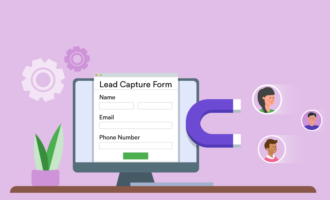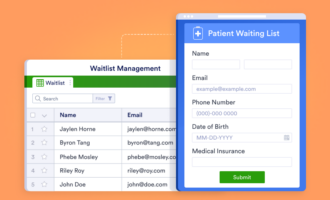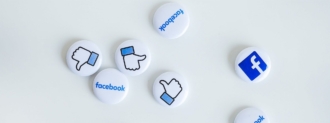No matter your business or industry, you need customers — primarily repeat, loyal ones who consistently rave about your products or service. They’re how you make money, grow your business, and keep it thriving year after year.
But since they aren’t always easy to attract — especially as competitors seem to crop up almost daily — it’s important to know how to convert people from prospects into customers.
Creating a landing page is one of the best ways to do that. While they’re fairly easy to build, there are some tips and tricks you can implement to design landing pages that convert.
What is a landing page?
Generally separate from your homepage (or any other page on your website), a landing page is where a buyer “lands” after clicking on a unique link — in a web ad, for example. By offering some sort of trade or special offer — like a free e-book or seven-day trial, for example — in exchange for contact information, landing pages have one goal: to help businesses turn website visitors into loyal customers. They’re basically necessary if you want to generate leads.
What are the benefits of a high-converting landing page?
In addition to helping your business convert prospects into customers, landing pages also deliver benefits like the following.
- They improve brand awareness, even if there isn’t an immediate conversion. With an impressive, well-designed landing page, you can simultaneously remind visitors why they were interested in your product in the first place and encourage them to return in the future.
- They help you grow your email subscriber list (especially if you’re just starting out). This can help you create more personalized, segmented follow-up emails that build trust and loyalty.
- They boost credibility. Because landing pages are typically focused on one objective — like offering a free consultation for the page visitor’s name and email address — it’s important you deliver on that promise to gain trust and reliability. So, when your visitor clicks on a link for a free consultation, make sure you provide it (without making them jump through additional hoops).
If you send them to your homepage first or request more information from them before following through, you risk losing their confidence in both your business and your product.
- They help you track user behavior. By monitoring traffic to landing pages, you can get valuable insights into which of your specific channels and marketing campaigns are the most effective.
What makes a high-converting landing page?
Here are six tips and design elements to help you create landing pages that convert.
- Match your ad copy and landing page headline to get the highest conversions. With consistent messaging across the ad your visitors click on and the landing page it directs them to, your visitors will know you’re not wasting their time, and you’ll receive viable, actionable information from prospective customers who are actually interested in your product.
- Keep your landing page simple and distraction-free — from the headline and copy to the images and overall messaging. With a concise, straightforward landing page, your visitors will appreciate how quickly and easily they can get what they want from your business, whether that’s a free e-book or webinar signup.
- Limit each landing page to one distinct offer. To build trust and credibility with your visitors, each landing page you create should solve a specific problem, not throw everything at the wall to see what sticks. If visitors clicked your ad to download an e-book, for example, that should be the only call to action (CTA) they see on that landing page.
- Cap your number of form fields at 10. When crafting the questions you want to include, be sure to only ask for information you absolutely need (e.g., name, email address, phone number, and company they work for), not necessarily all the information you might want. Do you really need to know both their job role and their title? Or their city, state, and country?
Pro Tip
When possible, use radio buttons (or multiple choice questions) to minimize the need for typing, especially if your form is a bit on the longer side.
- Test, test, and test again, particularly if one of your landing pages isn’t doing too well. By changing a few words in the copy, headline, or even the CTA button, you’d be surprised by how much more it can resonate with your visitors. Colors, too, can influence whether or not a buyer engages with your business, so be cognizant of the ones you choose and what they may represent.
- Use software to incorporate forms. The whole point of a landing page is to collect information from visitors. Without powerful and purposeful forms, collecting information and metrics is pretty much impossible.
Software like online form builder Jotform helps you create appealing, intuitive forms you can embed into your websites and landing pages to gather data and convert leads. And since the platform is completely code-free, it’s easy to use, whether you need to create lead generation, signup, or registration forms for your high-converting landing page.
There’s a big difference between a simply functional landing page and a high-converting landing page that generates leads, boosts brand awareness, and builds trust and credibility for your business with your customer base. Now that you know a little more about landing pages — and some helpful tips to consider — you’ll be better equipped to create a powerful one next time you want to highlight a particular product or service.
Photo by Buro Millennial


















































Send Comment: